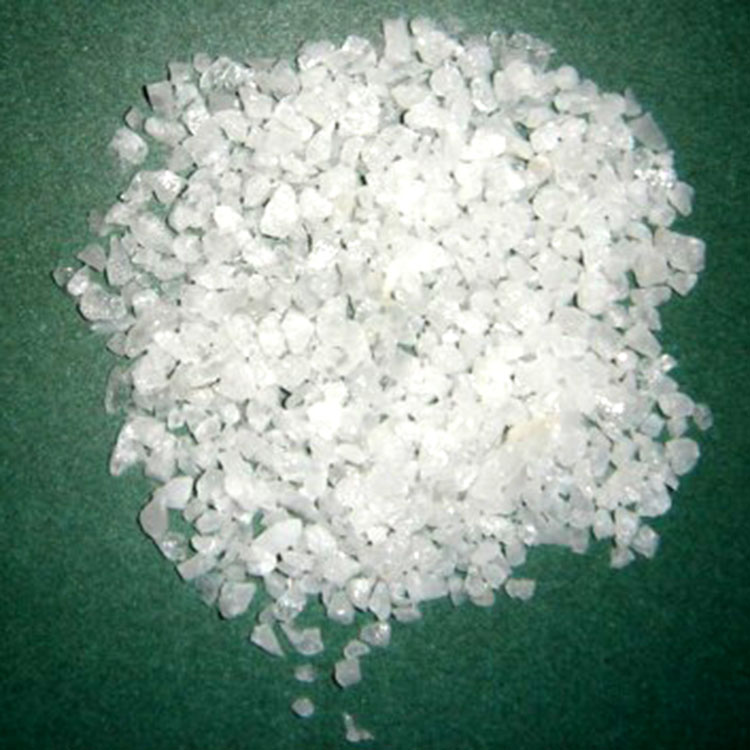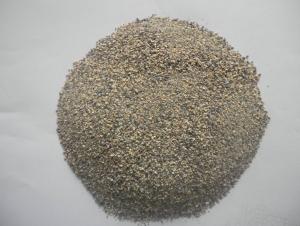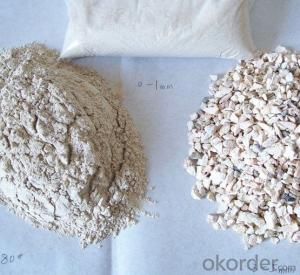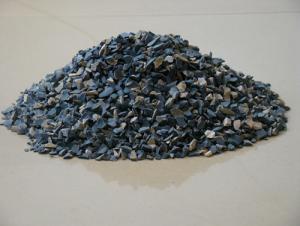Raw Materials for Refractory - Fused Silica
- Loading Port:
- China Main Port
- Payment Terms:
- TT OR LC
- Min Order Qty:
- -
- Supply Capability:
- -
OKorder Service Pledge
OKorder Financial Service
You Might Also Like
PRODUCT INFORMATION | |
Item | Fused Silica Powder |
Size | D50=9~11um |
Application | Epoxy insulation encapsulant material / Epoxy Molding Compound (EMC), Copper Clad Laminate (CCL), Electromagnetism Industry, Electronic Industry, Ceramic Industry, The Aerospace Industry, Glass Industry, Plastics Industry, Grinding Material Industry, Coating Industry, Investment Casting Industry, Thermal Insulation Product of Calcium Silicate, Refractory Material |
Model No. | R610 |
MOQ | 5 ton |
Material | natural silica rock after melting |
H.S. CODE | 25061000 |
PRODUCT CHEMICAL COMPOSITION AND PHYSICAL PROPERTIES | |
SiO2 | >99.99% |
Al2O3 | <0.015% 1000ppm |
Fe2O3 | <0.002% 50ppm |
Density | 2.2 |
Whiteness | >92% |
Moisture content | <0.05% |
Mohs hardness | 6.5 |
Igniting loss | <0.12% |
Appearance | powder |


- Q: Who knows the setting requirements of roofing fire barrier zone?
- curtain wall style architecture should meet the following requirements: The space between the inner cavity of the base wall and curtain wall and base wall, pier?between?two?windows, window sill wall and skirt wall should be sealed by the fire-proof?sealing?material at each floor. I hope I can help you!
- Q: Who can tell me what is neutral refractory?
- Refractories mainly refer to aluminum oxide, chromium oxide and carbon as the main component of refractory materials, such as corundum brick, high alumina brick, and carbon brick. Its characteristic goes to the resistance to both acidic and basic slag. Basic refractories mainly refer to the refractory materials whose mian components are magnesium oxide and calcium oxide, including magnesia bricks, magnesia-alumina bricks, magnesia chrome bricks, dolomite bricks, etc. Basic refractory is good at resisting basic slag erosion.
- Q: I wanna ask you, which level is b1 fireproof and thermal inuslation matertial ??
- What you said is the pixel! Only that has b1b2. Level b1 is the fireproofing level b1, because the particle does not belong to the fireproofing material. Only can fire?retardant. The wholesale of all kinds of thermal insulation material and construction need to look at the name.
- Q: What antioxidant will be used in refractories?
- Specifically speaking, it is an antioxidant used in carbon refractory products, which belongs to the fire resistant technology. A kind of refractory used antioxidants, formula proportion is as follows calculated by weight percentage: aluminium zinc alloy 1 ~ 100, conventional antioxidants in 0 ~ 100. Described in the aluminum zinc alloy element of aluminum content is 3% ~ 3%, the rest is zinc. Described aluminium zinc alloy is powder or fibrous long; The biggest size and long fiber powder makeup of maximum diameter is 0.2 mm. Preparation of the present invention contains aluminum zinc alloy antioxidants can prevent carbon oxidation temperature range is big, less side effects, and can adjust the thermal expansion of refractory. Hope I can help you.
- Q: What is the fire endurance of fireproof glass cotton?
- of course,A level is better. A-class is non-combustible, class B is fire retardant, rock wool fire resistance is 800 ℃, glass wool fire resistance is 450 ℃ , class B has a relatively better thermal insulation effect, hope it can solve your doubts.
- Q: Who knows about the fire endurance of grade C fire doors?
- The fire endurance of grade C fire doors is no less than 0.5 hours. As the key role of family fireproofing, fire doors is particularly important. It can be classified according to the fire endurance and thermal insulation performance: The fire endurance of grade A fire doors is not less than 1.5 hours; that of grade B fire doors is not less than 1.0 hours; and that of grade C fire doors is not less than 0.5 hours. We can choose in accordance with different needs, but commonly used fire doors are grade A and B fire doors now.
- Q: Are refractory materials and fireproofing materials the same?
- Refractories are generally used in the industry such as power plants, electric stove and industrial furnace. They include refractory bricks and insulation materials. Fireproof materials are generally used in building and they are fireproofing.
- Q: What is fire retardant coating mainly used for?
- The functions of refractory coating are as follows: 1. Non-intumescent fire retardant coating is mainly used for the fireproofing of wood, fiber board and other materials, and it is used in the surfaces of wood truss, roof, doors, windows and etc. Second, the intumescent fire retardant coating can be divided into non-toxic intumescent fire retardant coating, expansible fire retardant coating emulsions, solvent-based fire retardant coating. 3. Non-toxic intumescent fire retardant coating can be used to protect cables, polyethylene pipes and insulation board. 4, The expansible fire retardant coating emulsion and solvent-based fire retardant coating can be used for fireproofing of buildings, electricity power, and cables. 5. New fire retardant coating: Transparent fire retardant coating, water-soluble intumescent fire retardant coating, fireproof emulsion paint, polyvinyl acetate emulsion fire retardant paint, water-soluble intumescent fire retardant paint drying at room temperature, fire insulation coating polyolefin fire retardant coating, modified high chloropolyethylene fire retardant paint, chlorinated rubber fire retardant coating, firewall coating, intumescent coatings, wire and cable fire retardant paint, new fire retardant coating, casting fire retardant coating and so on.
Send your message to us
Raw Materials for Refractory - Fused Silica
- Loading Port:
- China Main Port
- Payment Terms:
- TT OR LC
- Min Order Qty:
- -
- Supply Capability:
- -
OKorder Service Pledge
OKorder Financial Service
Similar products
Hot products
Hot Searches
Related keywords























